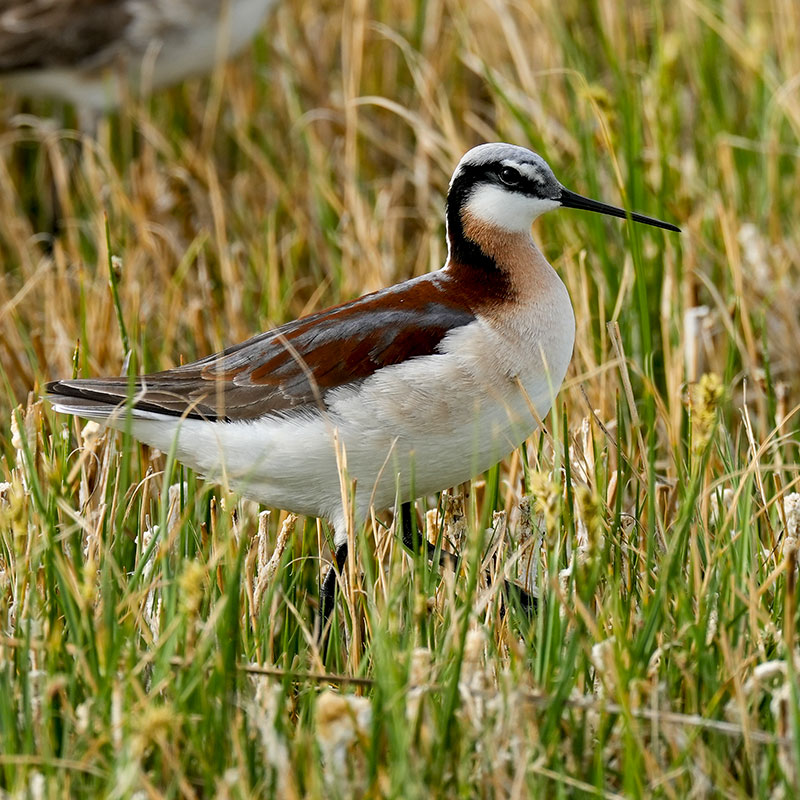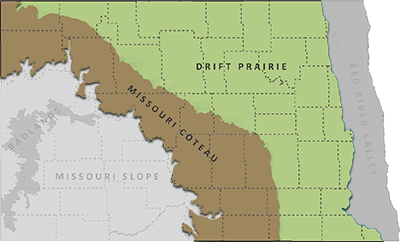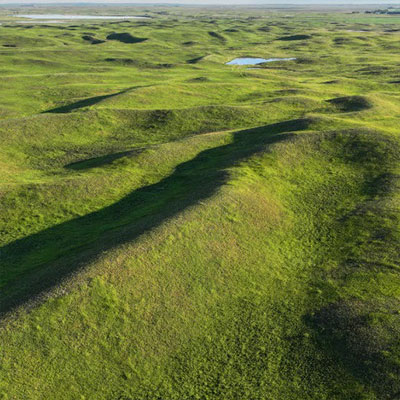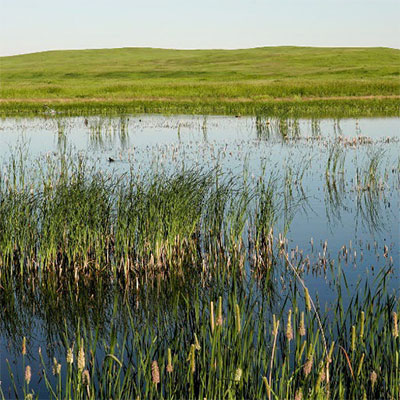Wilson’s Phalarope

NDGF
L 9.25”, WS 17”, 2.1 oz. Females sport a brownred and gray back, cinnamon neck, white throat and belly. Males are light gray and white.
Status in North Dakota
Occurs in North Dakota from mid-April to mid-October. Peak breeding season occurs late May to early July.
Reason for SWAP Designation
Regionally or globally imperiled, ND range important (SGCN a., b.).
ND ranks 2nd out of 18 states for highest percent of the global population (1.71%) during the breeding season (eBird).
ND has high stewardship responsibility.
Although Wilson’s Phalarope population is generally stable, recent concerns about the desiccation of saline lakes in the Great Basin, a major stopover site, have led to a petition for its listing under the ESA (March 2024).
Threats
Loss of grassland and grassland/wetland complexes.
Loss and degradation of wetlands, drainage and wetland consolidation.
Hydrologic shifts in wetlands of the PPR due to wetland consolidation and drainage, climate and land use changes (i.e. lakeification).
Classified as climate-endangered, Wilson’s Phalarope is projected to lose more than half of its current distribution by 2050, with no net gains of new areas (Audubon).
Increasing applications of agrochemicals and adverse impacts to water quality, the wetland vegetative community, and the aquatic invertebrate community.
Nest mortality may be higher than species utilizing similar habitat, possibly because of the phalarope’s tendency to place nests in the margins of wetlands where they are more easily flooded.
Collisions with overhead lines and wind turbines.
Research and Monitoring
Habitat requirements and demographics have been broadly researched on the breeding grounds.
Little known about annual adult survival or fledgling survival.
Information lacking on migration strategies, stopover sites, and wintering behaviors.
Identify if there is a migratory connection of the PPR breeding population with stopover sites in the Great Basin.
The Breeding Bird Survey, eBird and Partners in Flight Databases are key sources of information on distribution and population trends.
Management Recommendations
- Protect and conserve large, intact tracks of native prairie/unbroken grassland and wetland complexes.
- Restore hydrology and vegetation to degraded wetlands.
- Conserve shallow, working wetlands in cropland.
- Plant vegetative buffer strips around wetlands in cropland.
- Burn, mow, and graze grasslands to provide areas of shorter, sparser vegetation.
- Prevent or remove shrubs and tall woody vegetation in wetlands, either mechanically or by prescribed fire.
- Conscientious and appropriate application of agrochemicals.
- Follow beneficial or best practices during the design, siting, construction, operation, and maintenance of tall structures (e.g. transmission lines, communication towers, wind turbines).




